Jesús Labarta
A Closer Look at Art Mediums: The MAMe Image Classification Dataset
Jul 27, 2020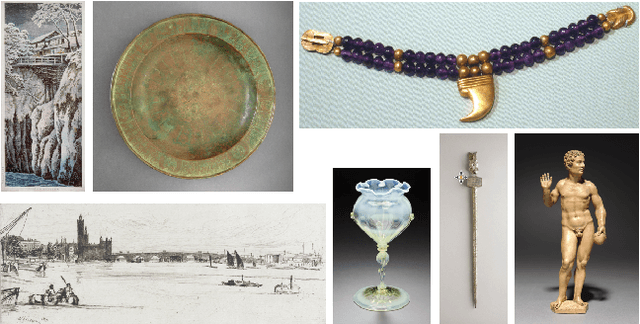
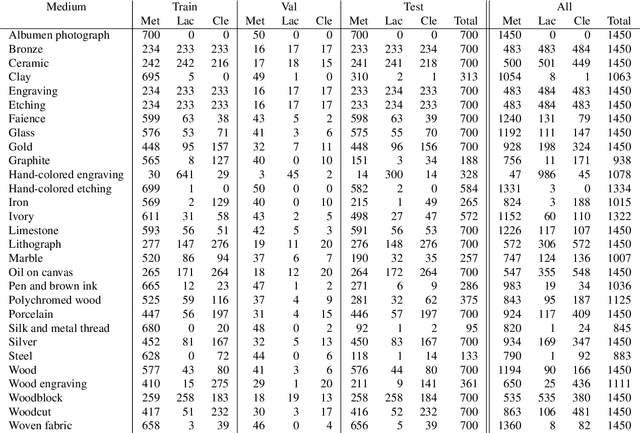
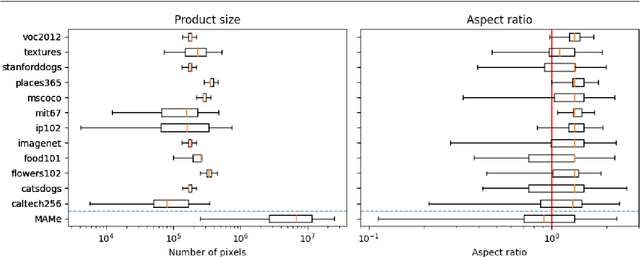
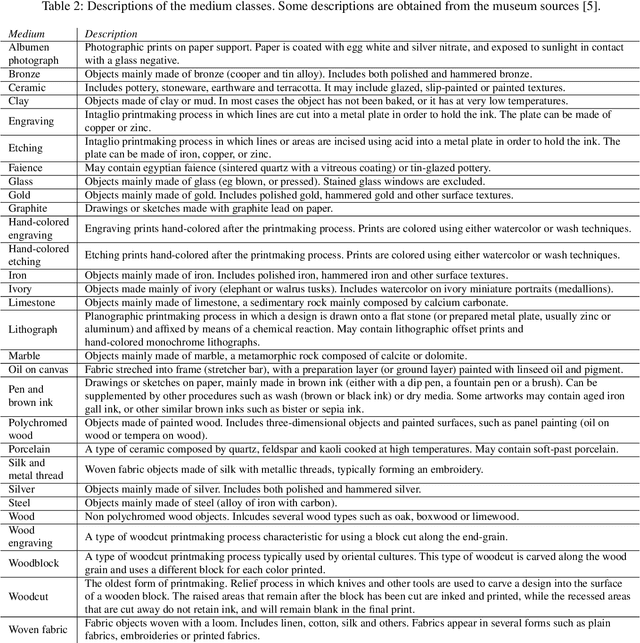
Abstract:Art is an expression of human creativity, skill and technology. An exceptionally rich source of visual content. In the context of AI image processing systems, artworks represent one of the most challenging domains conceivable: Properly perceiving art requires attention to detail, a huge generalization capacity, and recognizing both simple and complex visual patterns. To challenge the AI community, this work introduces a novel image classification task focused on museum art mediums, the MAMe dataset. Data is gathered from three different museums, and aggregated by art experts into 29 classes of medium (i.e. materials and techniques). For each class, MAMe provides a minimum of 850 images (700 for training) of high-resolution and variable shape. The combination of volume, resolution and shape allows MAMe to fill a void in current image classification challenges, empowering research in aspects so far overseen by the research community. After reviewing the singularity of MAMe in the context of current image classification tasks, a thorough description of the task is provided, together with dataset statistics. Baseline experiments are conducted using well-known architectures, to highlight both the feasibility and complexity of the task proposed. Finally, these baselines are inspected using explainability methods and expert knowledge, to gain insight on the challenges that remain ahead.
MetH: A family of high-resolution and variable-shape image challenges
Nov 29, 2019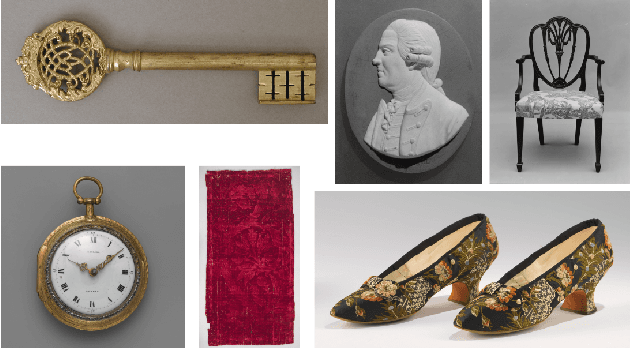



Abstract:High-resolution and variable-shape images have not yet been properly addressed by the AI community. The approach of down-sampling data often used with convolutional neural networks is sub-optimal for many tasks, and has too many drawbacks to be considered a sustainable alternative. In sight of the increasing importance of problems that can benefit from exploiting high-resolution (HR) and variable-shape, and with the goal of promoting research in that direction, we introduce a new family of datasets (MetH). The four proposed problems include two image classification, one image regression and one super resolution task. Each of these datasets contains thousands of art pieces captured by HR and variable-shape images, labeled by experts at the Metropolitan Museum of Art. We perform an analysis, which shows how the proposed tasks go well beyond current public alternatives in both pixel size and aspect ratio variance. At the same time, the performance obtained by popular architectures on these tasks shows that there is ample room for improvement. To wrap up the relevance of the contribution we review the fields, both in AI and high-performance computing, that could benefit from the proposed challenges.
Random Forest as a Tumour Genetic Marker Extractor
Nov 26, 2019
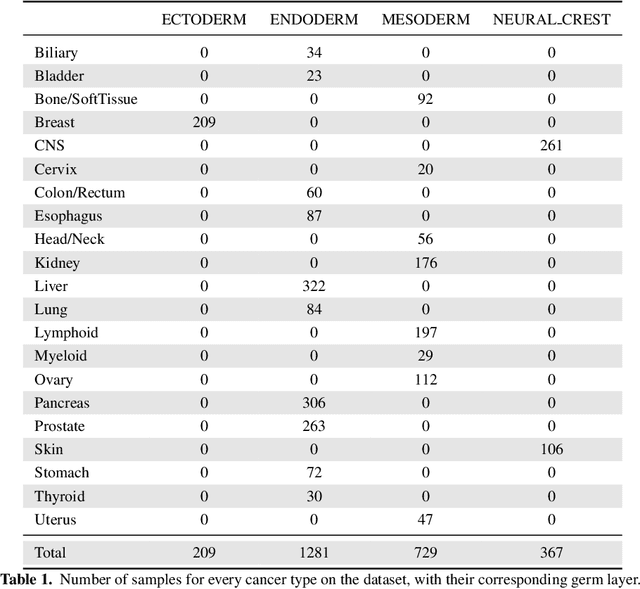
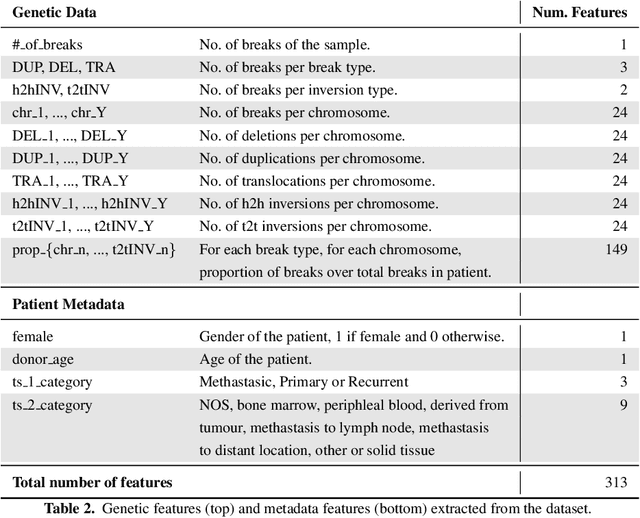
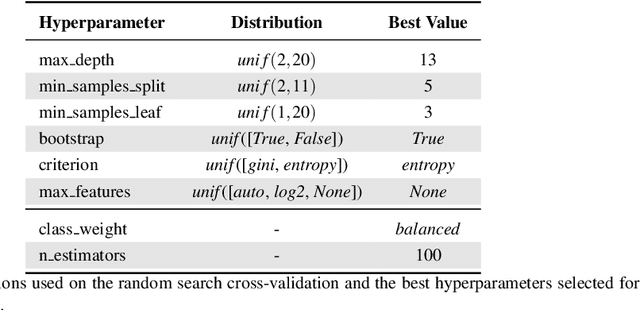
Abstract:Finding tumour genetic markers is essential to biomedicine due to their relevance for cancer detection and therapy development. In this paper, we explore a recently released dataset of chromosome rearrangements in 2,586 cancer patients, where different sorts of alterations have been detected. Using a Random Forest classifier, we evaluate the relevance of several features (some directly available in the original data, some engineered by us) related to chromosome rearrangements. This evaluation results in a set of potential tumour genetic markers, some of which are validated in the bibliography, while others are potentially novel.
On the Behavior of Convolutional Nets for Feature Extraction
Jan 29, 2018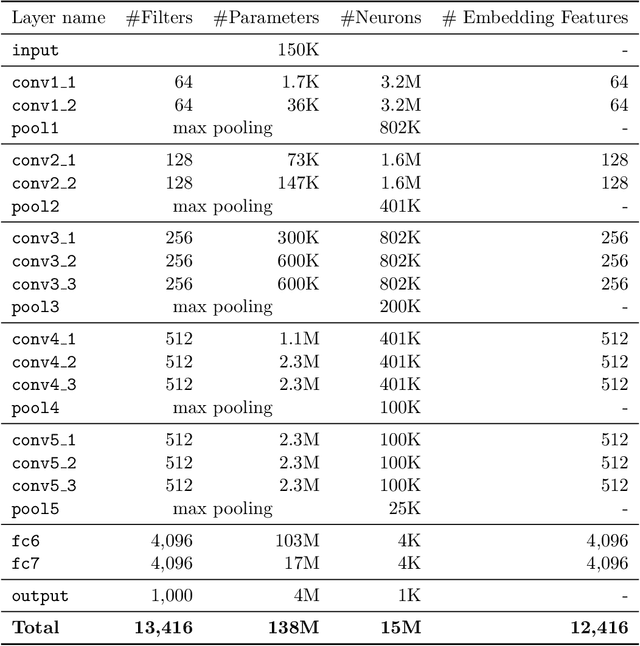

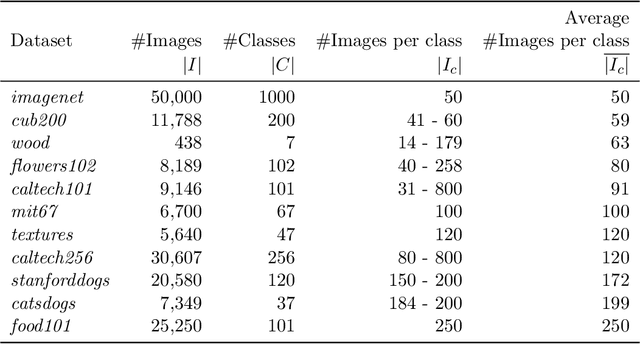
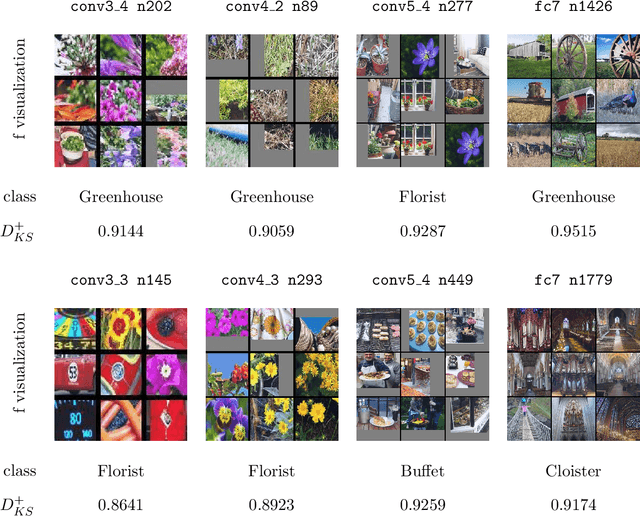
Abstract:Deep neural networks are representation learning techniques. During training, a deep net is capable of generating a descriptive language of unprecedented size and detail in machine learning. Extracting the descriptive language coded within a trained CNN model (in the case of image data), and reusing it for other purposes is a field of interest, as it provides access to the visual descriptors previously learnt by the CNN after processing millions of images, without requiring an expensive training phase. Contributions to this field (commonly known as feature representation transfer or transfer learning) have been purely empirical so far, extracting all CNN features from a single layer close to the output and testing their performance by feeding them to a classifier. This approach has provided consistent results, although its relevance is limited to classification tasks. In a completely different approach, in this paper we statistically measure the discriminative power of every single feature found within a deep CNN, when used for characterizing every class of 11 datasets. We seek to provide new insights into the behavior of CNN features, particularly the ones from convolutional layers, as this can be relevant for their application to knowledge representation and reasoning. Our results confirm that low and middle level features may behave differently to high level features, but only under certain conditions. We find that all CNN features can be used for knowledge representation purposes both by their presence or by their absence, doubling the information a single CNN feature may provide. We also study how much noise these features may include, and propose a thresholding approach to discard most of it. All these insights have a direct application to the generation of CNN embedding spaces.
Limitations and Alternatives for the Evaluation of Large-scale Link Prediction
Nov 25, 2016
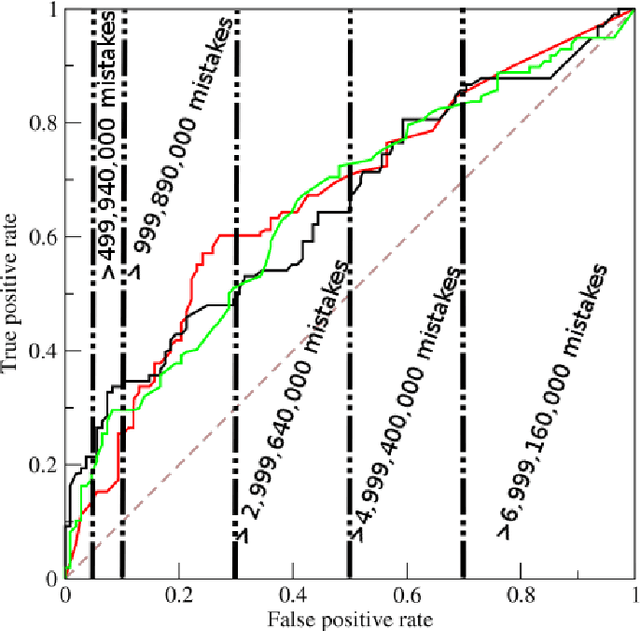
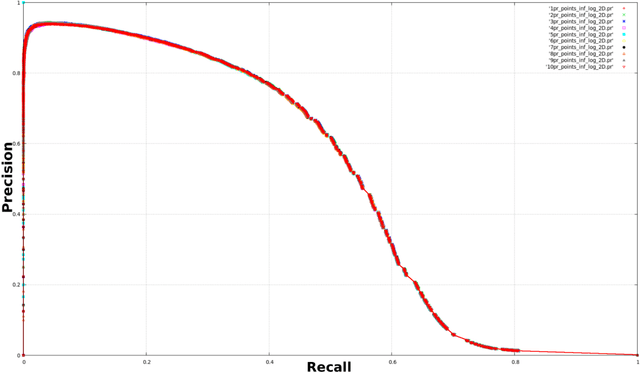

Abstract:Link prediction, the problem of identifying missing links among a set of inter-related data entities, is a popular field of research due to its application to graph-like domains. Producing consistent evaluations of the performance of the many link prediction algorithms being proposed can be challenging due to variable graph properties, such as size and density. In this paper we first discuss traditional data mining solutions which are applicable to link prediction evaluation, arguing about their capacity for producing faithful and useful evaluations. We also introduce an innovative modification to a traditional evaluation methodology with the goal of adapting it to the problem of evaluating link prediction algorithms when applied to large graphs, by tackling the problem of class imbalance. We empirically evaluate the proposed methodology and, building on these findings, make a case for its importance on the evaluation of large-scale graph processing.
 Add to Chrome
Add to Chrome Add to Firefox
Add to Firefox Add to Edge
Add to Edge